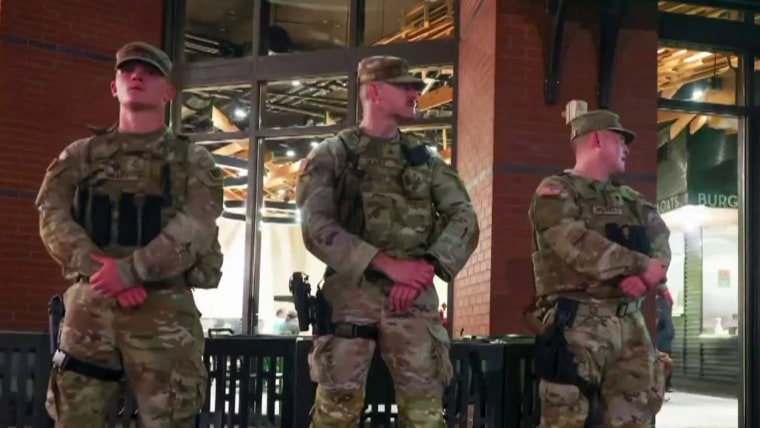President Donald Trump's deployment efforts National Guard troops in states that don't want them to be tested Thursday in two different courts.
Lawyers for Chicago and Illinois will appear before a federal judge to try to block the deployment of troops in the nation's third most populous city, while lawyers for Portland and Oregon will urge a federal appeals court to uphold a restraining order against stationing troops there.
The hearings in Chicago and San Francisco will begin at noon Eastern time in courthouses about 2,000 miles apart.
“We want the courts to do the right thing,” Illinois Gov. J.B. Pritzker, a Democrat, told reporters Wednesday.
Trump defended his actions in both states. “Everything we do is completely legal. What they are doing is illegal,” he said at the White House later Wednesday.
Illinois sued on Monday trying to block the administration deployment of federal National Guard troops on the streets of Chicago, arguing that it is illegal, unconstitutional and unnecessary.
Trump ordered the deployment over the weekend. US Northern Command stated that 500 National Guard members were mobilized — 300 from Illinois and 200 from Texas — and that as of Wednesday evening, some troops from Texas were on duty “in the greater Chicago area.”
“This force will protect U.S. Immigration and Customs Enforcement and other U.S. Government personnel who perform federal functions, including enforcing federal law, and protect federal property,” Northern Command said in a statement.
the claim claims that there is no emergency in Chicago and that the administration is trying to provoke unrest by increasing the presence of federal law enforcement agents who are using “unprecedented brute force tactics to enforce civilian immigration.”
Those tactics included firing “chemical munitions at groups that included members of the media and legal observers” at an ICE facility outside Chicago, as well as staging a dramatic raid on an apartment building in which agents descended from Black Hawk helicopters.
“Public horror at these tactics and their serious consequences has led to predictable protests,” the lawsuit says.
“The deployment of federal National Guard, including from out of state, violates Illinois' sovereignty and right to self-government” and “will only cause more unrest,” it added.
The White House says Trump is trying to keep American cities and federal personnel safe. Trump said this week that if the courts thwart his efforts to use the National Guard, he could cite Insurrection Actwhich would give him the opportunity use the US army inside the country.
“The Trump administration is committed to restoring law and order to American cities that have been plagued by violence due to Democratic mismanagement. And President Trump will not stand by while violent rioters attack federal law enforcement officers,” White House press secretary Abigail Jackson said Wednesday.
The administration is expected to make similar arguments to a three-judge panel of the 9th U.S. Circuit of Appeals in San Francisco, which is asking for a stay over the weekend of a federal judge's ruling in Oregon blocking federalization and the deployment of the state's National Guard.
U.S. District Judge Karen Immergut's “emergency” order “improperly impinges on the commander in chief's oversight of military operations, overrides military directive for officers in the field, and puts federal personnel and property at risk,” Justice Department lawyers argued in a filing. filing a lawsuit.
They also noted that the 9th Circuit this year blocked a similar restraining order involving National Guard troops in Los Angeles and ruled then that the president's decision about whether troops were needed should deserve “great respect.”

Immergut, a Trump appointee, said in her order that the Portland case was different from the California case, in part because Trump appeared to have acted in bad faith in his claims of violence in the city, including that it was “torn by war” with “ICE facilities under siege from Antifa attacks” and “crazy people” who are “trying every night burn down buildings, including federal ones.”
While there were some violent protests in June, demonstrations “were not significant or disruptive in the days—or even weeks—before the Sept. 27 executive order,” Immergut wrote, characterizing the protests as mostly “small and uneventful.”
“On September 26, the day before the executive order, law enforcement “observed approximately 8-15 individuals at any given time in front of ICE. Mostly they sat on sun loungers and walked. Energy was low and activity was minimal,” her order said.








